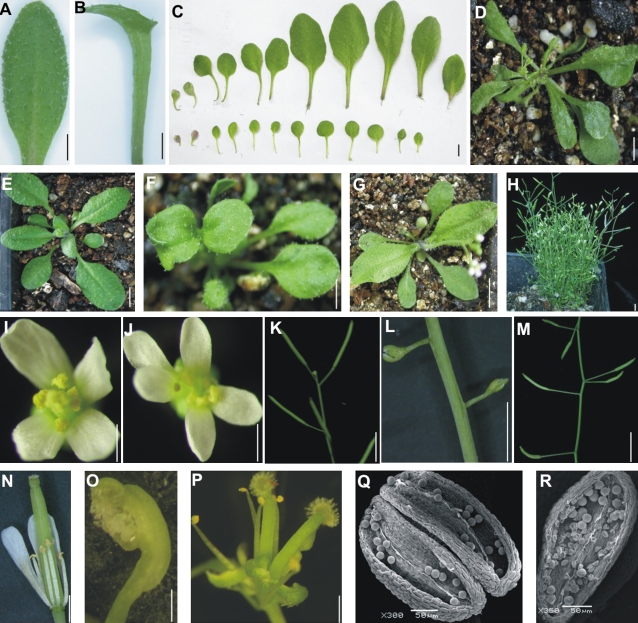Fig. 7.
Phenotypes of the Arabidopsis transformants. (A) Leaf of Columbia. (B) Lotus leaf of the transformants. (C) Top and bottom: leaves of Columbia and one transformant arranged in a growth sequence, respectively. (D) Leaf curling and distortion in one transformant. (E) Columbia, showing leaf shape and phyllotaxy. (F) Fused-petiole in one transformant. (G) Opposite phyllotaxy in one transformant. (H) Transformant showing dwarf and cluster. (I) Flower of Columbia. (J) Five-petal flower in one transformant. (K) Silique in Columbia. (L) Infertile silique in one transformant. (M) Disordered silique of one transformant. (N) Gynoecium of Columbia. (O) Gynoecium in one transformant exaggerated. (P) Increased gynoecia in one transformant. (Q, R) SEM analysis of pollen in Columbia and one transformant, showing fertile pollen in (Q) and infertile pollen in (R). Bars in (A), (B), (C), (K), (L), (M), (N), (O), and (P) were 0.5 cm; in (D), (E), (F), (G), and (H) were 1 cm; in (I) and (J) were 1 mm. (This figure is available in colour at JXB online.)

